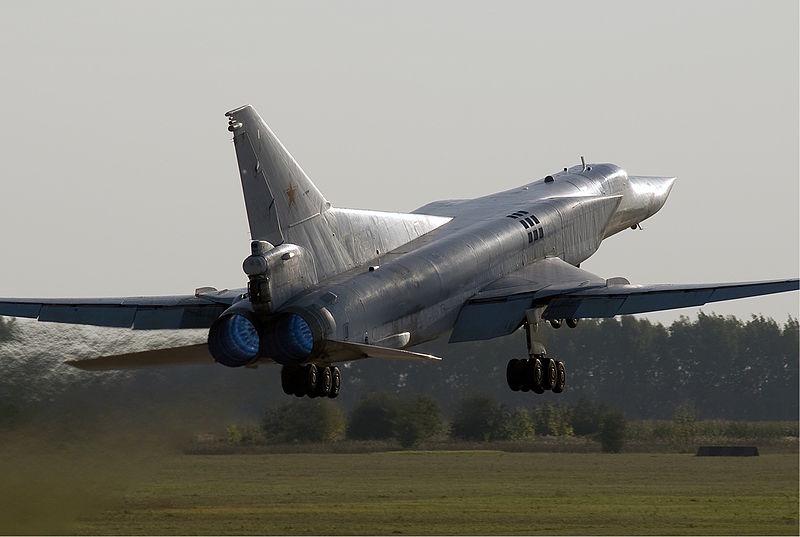Erik Arnberg, a reader of The Aviationist, brought to my attention an episode that occurred on the night of Mar. 29, 2013, when Russian military aircraft simulated a large scale bomb run on Sweden.
The episode got much media attention among the Swedish media outlets on Apr. 22, when more details about the simulated attack surfaced.
According to the Svenska Dagbladet, after midnight on Mar. 29 (Good Friday), the Swedish radars detected six fast planes coming from the east, originating from the St. Petersburg area and overflying the Gulf of Finland.
The route the aircraft were flying was far from being suspect: Russian bombers periodically fly across the Baltic Sea to reach the Russian enclave of Kaliningrad, located between Lithuania and Poland.
However, on Mar. 29, the two Tu-22M3 Backfire heavy bombers, capable to carry cruise missiles and nuclear weapons, and their four Su-27 Flanker fighter jets escort got dangerously close to the Swedish airspace and, at 2 AM local time, they skirted Gotland island, some 30-40 kilometers off the Swedish territorial waters.
After they carried out their mock attacks (on targets in the Stockholm area and Southern Sweden, according to Swedish military sources who talked to Svenska Dagbladet) they turned back and returned towards Russia.
The episode is similar to those Soviet Union’s exercises typical of the Cold War, when bombers carrying the typical Red Star flew quite close to the Swedish airspace boundaries and got intercepted by Swedish interceptors. Such “visits” ended in 1992 but returned in 2011 when Putin resumed the long-range flights of its strategic bombers.
Although some Tu-22M3 Backfire bombers flew over the Baltic Sea in the last year, what’s unusual in Mar. 29 incident is that the Russian activity took place at night and, above all, it found the Swedish Air Force totally unprepared.
Even if at least two JAS-39 Gripen should always be in QRA (Quick Reaction Alert) and ready for take off in case of alarm, quite surprisingly there were no interceptors ready on Good Friday night.
However, since 2004, NATO has a QRA detachment in Lithuania’s First Air Base in Zokniai/Šiauliai International Airport, whose aim is to guard the airspace over the three Baltic states Estonia, Latvia and Lithuania. The task is shared by several NATO members; since Jan. 2013, the Baltic air policing task is assigned to the Royal Danish Air Force.
On Mar. 29, two RDAF F-16 fighter jets took off from Siuliai to shadow the Russian bombers and fighters from distance as the formation headed east towards Russia.
Analysts believe the massive restructuring process that downsized the Swedish Air Force from 20 squadrons and over 400 planes to four divisions and less than 150 planes is to blame for the lack of preparedness of the Swedish air defense.
For sure the Russian military activity didn’t come unannounced. As said, it was neither the first time nor will be the last to see Moscow’s bombers, fighter jets performing simulated attacks on strategic targets around the world.
On Feb. 26 and 27, after Russian Tu-95 had skirted Guam airbase, Tu-22M Backfires simulated strikes on a U.S. Aegis cruiser in the Pacific and ground-based radar station in Japan.
And, in the future, Russian could detach its advanced, stealth PAK-DA, destined to replace the current aging fleet of 63 Tu-95 Bear and 13 Tu-160 Blackjack strategic bombers.
Sweden, Japan and U.S. you’d better be prepared.
Image credit: Sergey Krivchikov

















